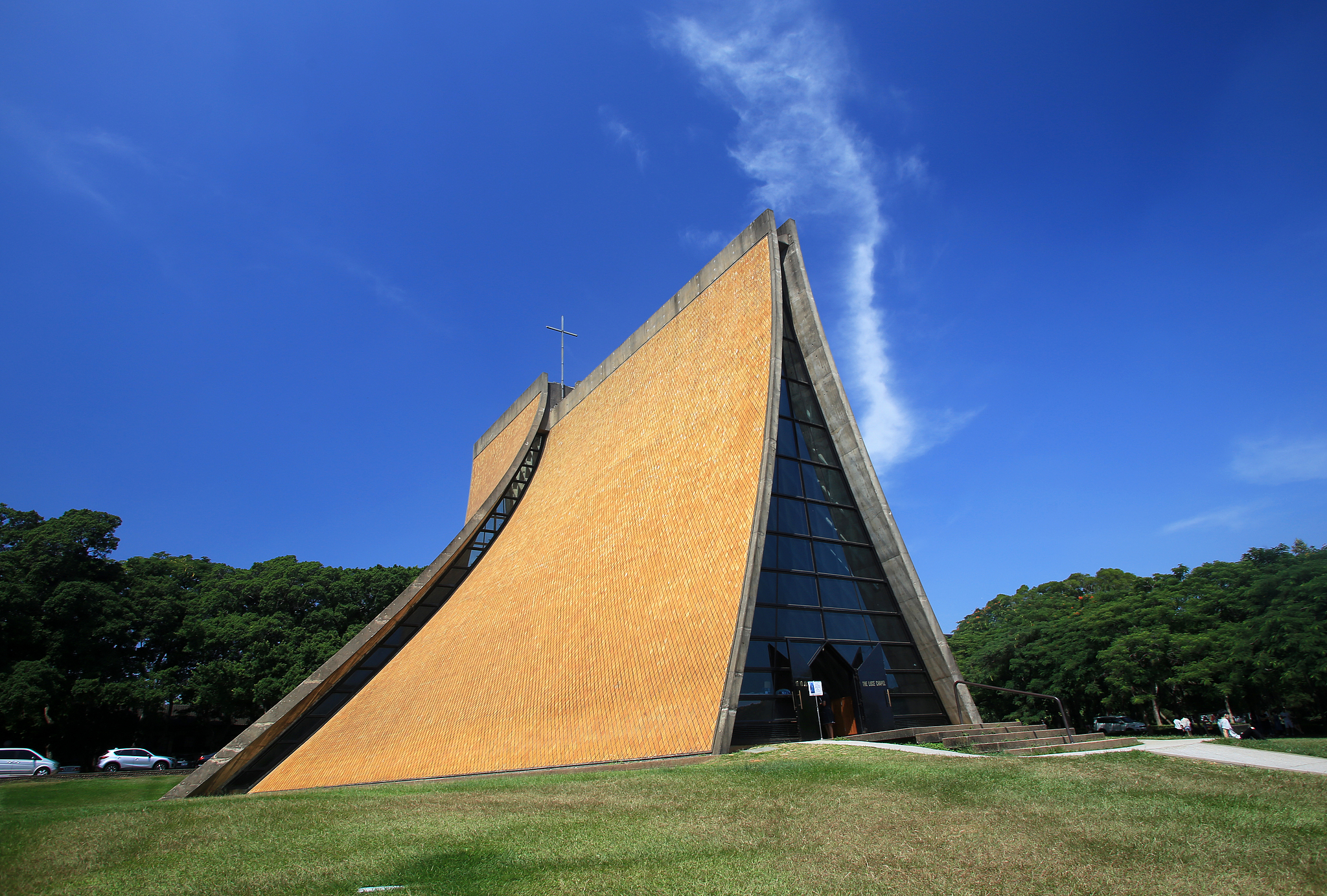By Zhong Taiwen

Taiwan's tallest skyscraper Taipei 101, a 508-meter high commercial building, is seen in Taipei, May 17, 2024. / CFP
Editor's note: Zhong Taiwen is a current affairs commentator. The article reflects the author's opinions and not necessarily the views of CGTN.
The origin and evolution of the Taiwan question are closely linked to the fate of the Chinese nation since modern times. Eighty years ago, the Chinese people achieved a great victory in the Chinese People's War of Resistance Against Japanese Aggression and the World Anti-Fascist War, leading to the restoration of Taiwan. Soon afterward, however, due to the prolonged Chinese civil war and the intervention of external forces, the two sides of the Taiwan Strait entered a prolonged period of political confrontation, giving rise to the Taiwan question. Born from national weakness and turmoil, the Taiwan question is a legacy of the Chinese civil war in the 1940s. It is purely a matter of China's internal affairs and will be thoroughly resolved as national rejuvenation becomes a reality.
History cannot be falsified – Taiwan's status as part of China has already been settled
Historical and legal precedents unequivocally affirm that Taiwan has been an inalienable part of Chinese territory since ancient times. Archaeological evidence indicates that early inhabitants of Taiwan migrated from the mainland. The earliest written account of Taiwan dates back to 230 AD, documented in Records of the Linhai Commandery by Shen Ying of the Eastern Wu during the Three Kingdoms (222-280) period. By the Northern Song Dynasty (960-1127), Han Chinese settlers had established communities in the Penghu Islands. From the Song (960-1279) and Yuan (1271-1368) dynasties onward, successive central governments of China began establishing administrative institutions and exercising jurisdiction over both Penghu and Taiwan.
In the mid-12th century, the Southern Song Dynasty (1127-1279) placed Penghu under the administration of Jinjiang County in Quanzhou, Fujian, and stationed troops there. The Yuan Dynasty later established the Penghu Inspection Office to oversee the region. In 1662, Zheng Chenggong expelled Dutch colonists and reclaimed Taiwan, establishing administrative bodies on the island. By 1683, the Qing Dynasty (1644-1911) had consolidated control over Taiwan and, the following year, established Taiwan Prefecture under the jurisdiction of Fujian Province. Over time, Taiwan evolved into a prosperous and economically vibrant region.
In 1735, a map published in France's Description of the Chinese Empire clearly marked Taiwan as part of Fujian Province, reinforcing its administrative affiliation through cartographic evidence. In 1885, the Qing government elevated Taiwan to the 20th province of China, transforming it into one of the nation's most advanced regions. The development of Taiwan is a testament to the perseverance and hard work of the Chinese nation. Throughout most of its administrative history, Taiwan has remained under the effective governance of China's central government. Generations of Chinese have cultivated and thrived on the island, allowing Chinese culture to take root, flourish, and endure.
In 1895, Japan seized Taiwan and the Penghu Islands through the unequal Treaty of Shimonoseki. In July 1937, Japan's attack on the Marco Polo Bridge ignited the full-scale War of Resistance Against Japanese Aggression in China. The following month, the Communist Party of China issued the Ten-Point Program for Resisting Japan and Saving the Nation, urging the Chinese people to sever relations with Japan and abolish all unequal treaties. On December 9, 1941, the Chinese government formally declared war on Japan, proclaiming the annulment of all treaties and agreements between the two nations.
On December 1, 1943, the Cairo Declaration, issued by China, the United States, and the United Kingdom, stated that all territories stolen by Japan, including Northeast China, Taiwan, and the Penghu Islands, should be restored to China. This commitment was reaffirmed in the Potsdam Proclamation, signed by China, the U.S., and the U.K. on July 26, 1945, and later endorsed by the Soviet Union. On August 15, Japan accepted the terms of the Potsdam Proclamation and surrendered unconditionally. The following month, Japan signed the Instrument of Surrender, pledging to faithfully fulfill the provisions of the proclamation.
On October 25, 1945, the Chinese government announced the resumption of sovereignty over Taiwan. It held a surrender ceremony in Taipei, marking the formal recovery of Taiwan in both legal and practical terms. With this, Taiwan was restored to China, and its status as part of Chinese territory was conclusively resolved.
The Taiwan question arose as a result of national weakness and turmoil
In modern times, China descended into a semi-colonial, semi-feudal society due to foreign invasions and the corruption of its feudal rulers. The nation was plunged into deep suffering, grappling with internal turmoil, external threats, and a fractured sovereignty. The Chinese nation endured unprecedented calamities, which included the foreign occupation of Taiwan and the oppression of our Taiwanese compatriots under colonial rule for half a century – a profound and enduring pain etched into the memory of all Chinese people.
Following Taiwan's cession, a patriotic "Resist the Cession of Taiwan" salvation movement swept across the nation. Taiwan compatriots persistently resisted the Japanese occupation, defending with their blood and lives the fact that Taiwan is part of China, and proving through their actions their unwavering identity as Chinese people. After relentless and heroic struggles by all the Chinese people, including our compatriots in Taiwan, China achieved a great victory in the War of Resistance against Japanese Aggression in 1945. This led to the restoration of Taiwan and its return to Chinese territory. Taiwan's restoration stands as a major outcome of the victory in the War of Resistance and a crucial component of the post-war international order, a legacy that compatriots on both sides of the Straits should jointly remember and uphold.
Shortly after the victory in the War of Resistance, the Kuomintang launched an all-out civil war, which resulted in their comprehensive defeat within just three years. In October 1949, the People's Republic of China was founded. By the end of that same year, the Kuomintang had retreated to Taiwan. Just as the People's Liberation Army was preparing to liberate Taiwan, the Korean War broke out on June 25, 1950. Seizing the opportunity, the United States dispatched its forces into the Taiwan Straits to obstruct the People's Liberation Army's mission to liberate Taiwan and provided support to the Kuomintang. This intervention gave rise to the Taiwan question, which remains unresolved to this day.

Picture shows Tunghai University in Taichung City. / CFP
The fact that Taiwan is part of China has never changed
Following the emergence of the Taiwan question, despite prolonged political confrontation across the Taiwan Straits, China's sovereignty and territorial integrity have never been divided, and Taiwan's status as part of China has never changed. On October 1, 1949, the central government of the People's Republic of China was proclaimed, replacing the government of the Republic of China as the sole legitimate government representing the whole of China. This was a change of government within the same international legal entity, with no alteration to China's sovereignty or inherent territorial boundaries. Consequently, the government of the People's Republic of China naturally enjoys and exercises full sovereignty over the entire country, including Taiwan.
The one-China principle is reflected in the relevant legal and regulatory frameworks of both sides of the Strait. In December 1982, the Fifth Session of the Fifth National People's Congress adopted the Constitution of the People's Republic of China, which explicitly states that "Taiwan is part of the sacred territory of the People's Republic of China." In March 2005, the Third Session of the Tenth National People's Congress enacted the Anti-Secession Law, clearly stipulating that "Taiwan is part of China. The state shall never allow the 'Taiwan independence' secessionist forces to make Taiwan secede from China under any name or by any means." The relevant regulations in the Taiwan region also acknowledge that both sides of the Strait belong to one China and that Taiwan is part of China.
The one-China principle is a fundamental norm of international relations and a broad consensus of the international community. In 1971, the United Nations General Assembly adopted Resolution 2758 with an overwhelming majority, recognizing "the representatives of the Government of the People's Republic of China as the only legitimate representatives of China to the United Nations." The logical premise of this resolution is that "Taiwan belongs to China," thereby unequivocally ruling out any possibility of "two Chinas," "one China, one Taiwan," or "Taiwan independence" in international law. The UN Office of Legal Affairs has explicitly stated in its official legal opinion that Taiwan has no independent status as a province of China. To date, 183 countries have established diplomatic relations with the People's Republic of China, all of which support the Chinese government's principled stance on the Taiwan question. A growing number of countries firmly adhere to the one-China principle, recognize Taiwan as an inalienable part of China, resolutely oppose any form of "Taiwan independence," and staunchly support the Chinese government’s efforts to achieve national reunification.
The Taiwan question must be resolved by the Chinese people themselves
For over seven decades since the emergence of the Taiwan question, the Communist Party of China, the Chinese government, and the Chinese people have made unremitting efforts to resolve it. Under the strong leadership of the Communist Party of China, the Chinese nation has embarked on a new chapter toward great rejuvenation, and Chinese civilization has been revitalized, laying a solid foundation for resolving the Taiwan question and achieving national reunification. The Communist Party of China has made major strategic decisions and put forward important policy propositions to resolve the Taiwan question and realize national reunification, transforming the situation in the Taiwan Strait from tension and confrontation to relaxation and improvement, and profoundly reshaping the overall landscape of cross-Straits relations.
Compatriots on both sides of the Strait share common bloodlines, culture, and history, as well as a shared responsibility for the nation and common aspirations for the future. Over three decades ago, the two sides reached a consensus, later known as the "1992 Consensus," in which they orally affirmed that "both sides of the Strait adhere to the one-China principle." This consensus clearly defines the nature of cross-Straits relations, affirming that both sides belong to one China and jointly seek national reunification. This fully demonstrates that the Chinese people on both sides of the Strait have the ability and wisdom to resolve their own questions.
Historical facts have amply proven that the "1992 Consensus," which embodies the one-China principle, is the anchor for peace and stability in the Taiwan Strait. Upholding the one-China principle and the "1992 Consensus" ensures the improvement and development of cross-Strait relations and benefits compatriots in Taiwan. Conversely, any deviation from this principle and consensus leads to tension and instability, harming the interests of Taiwan compatriots. All 23 million Taiwan compatriots are part of the Chinese nation and are Chinese. Differences in social systems do not change the objective fact that both sides of the Straits belong to one nation and one people. The relationship between the two sides is not one between two countries, nor is it "one China, one Taiwan." As long as there is no attempt to split the nation, and as long as both sides identify as Chinese and part of one family, they can sit down for dialogue, resolve differences, build mutual trust, open a new chapter for the peaceful development of cross-Strait relations, and build consensus for the complete reunification of the motherland.
The Taiwan question arose from national weakness and turmoil, and it will inevitably be resolved as the nation achieves rejuvenation. National rejuvenation and reunification represent the trend of history, the demand of righteousness, and the will of the people. On the historic journey toward the great rejuvenation of the Chinese nation, compatriots on both sides of the Strait will surely resolve the Taiwan question at an early date, achieve the complete reunification of the motherland, and share in the glory of national rejuvenation!



